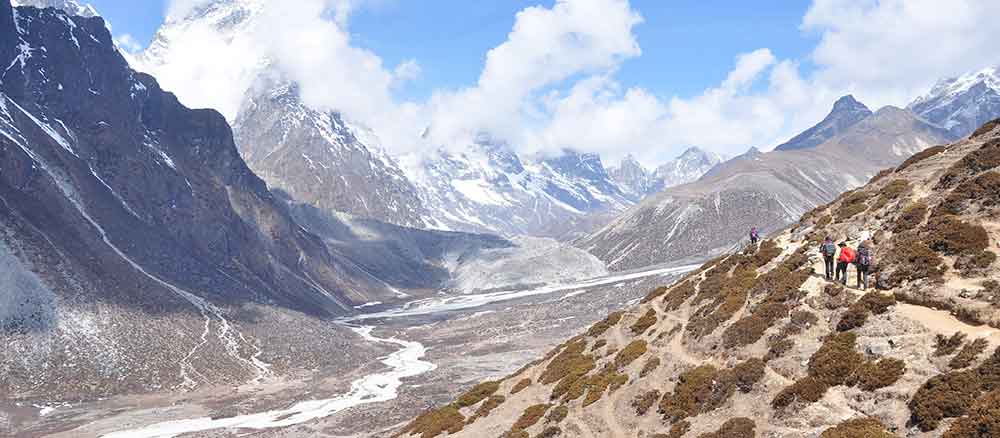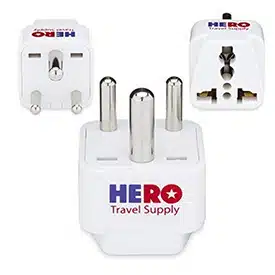Best known for the cragged peaks and groaning glaciers of the majestic Himalayas, Nepal is a dream destination for intrepid hikers and climbers to explore. Yet there’s far more than high altitude trails to tempt the traveler, as the country’s captivating ancient culture and intricate Buddhist stupas can attest. Of course, you have to be able to charge your devices to make the most of your time. So without further ado, here’s everything you need to know about power adapters in Nepal.

Summer (June to August) is the monsoon season, which means higher temperatures and a relentless amount of rain. Although hiking is still possible, muddy trails and daily rainfall make it an unpleasant experience that most trekkers prefer to avoid. The showers only tend to last an hour or two, however, meaning the country is still open for business for those who don’t intend to hike.
Fall (September to November) is Nepal’s peak trekking season, which mostly entails clear blue skies and a distinct lack of rain. You’ll have to share the mountains with loads of other tourists, however, and airfares and hotel rates will increase.
The winter (December to February) sees heavy snowfall close the high altitude trails, thus rendering the best trekking off-limits. Nevertheless, you can still enjoy a few low-altitude routes, and the rest of the country is fine to visit. Spring (March to April) is another excellent time to trek as the weather is balmy and the vegetation is in full bloom. Note that the climate does tend to be a little more unpredictable than in Fall. Be sure to check current Nepal travel advisories before you go.











 Frantic and chaotic yet utterly entrancing, the historic city of Kathmandu lays on the charm despite its third-world pitfalls. And even though a 2015 earthquake leveled large swathes of the city, the ancient wonders that remain make Kathmandu a must-visit for any history buff. Most make a beeline for Durban Square, Nepal’s religious and historic epicenter where sadhu holy men rub shoulders with foreigners amid exotic millennia-old sites.
Frantic and chaotic yet utterly entrancing, the historic city of Kathmandu lays on the charm despite its third-world pitfalls. And even though a 2015 earthquake leveled large swathes of the city, the ancient wonders that remain make Kathmandu a must-visit for any history buff. Most make a beeline for Durban Square, Nepal’s religious and historic epicenter where sadhu holy men rub shoulders with foreigners amid exotic millennia-old sites. To marvel at awe-inspiring ancient wonders without the congestion of Kathmandu, make your way to the nearby villages of Patan and Bhaktapur. Each has its own temple-strewn Durbar Square that rivals the magic of the capital. Wildlife lovers should make their way downhill to the steamy lowlands of the Chitwan National Park. Throughout these lush grasslands live exotic fauna such as leopards, rhinos, sloths, and the elusive Bengal tiger, not to mention an array of colorful birdlife.
To marvel at awe-inspiring ancient wonders without the congestion of Kathmandu, make your way to the nearby villages of Patan and Bhaktapur. Each has its own temple-strewn Durbar Square that rivals the magic of the capital. Wildlife lovers should make their way downhill to the steamy lowlands of the Chitwan National Park. Throughout these lush grasslands live exotic fauna such as leopards, rhinos, sloths, and the elusive Bengal tiger, not to mention an array of colorful birdlife. Nepal’s underdeveloped infrastructure makes overland transport a chore, which is why many travelers prefer to take to the skies instead. National carrier Nepal Airlines has the most services, although competitors such as Buddha Air, Yeti Airlines, and Simrik Airlines sometimes offer cheaper rates. Regardless of who you choose, cancellations and delays are common due to the unpredictable high-altitude climate.
Nepal’s underdeveloped infrastructure makes overland transport a chore, which is why many travelers prefer to take to the skies instead. National carrier Nepal Airlines has the most services, although competitors such as Buddha Air, Yeti Airlines, and Simrik Airlines sometimes offer cheaper rates. Regardless of who you choose, cancellations and delays are common due to the unpredictable high-altitude climate.
